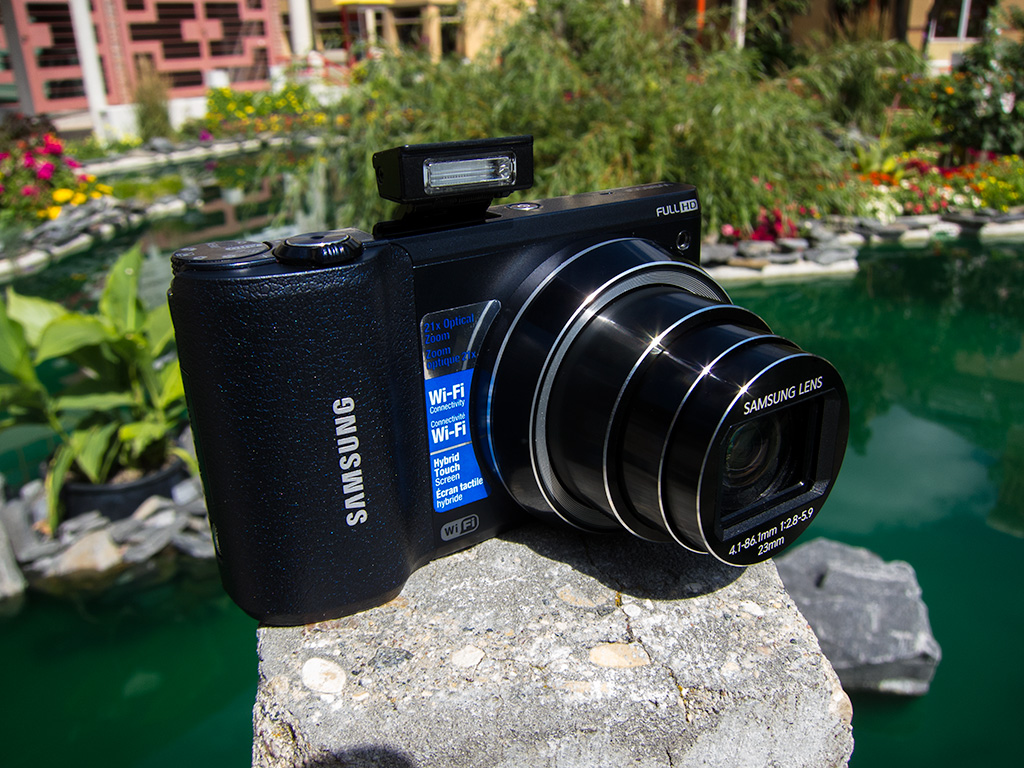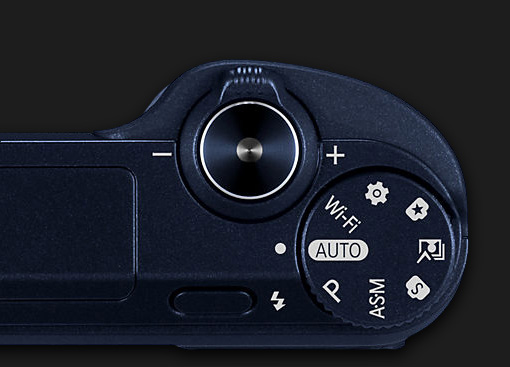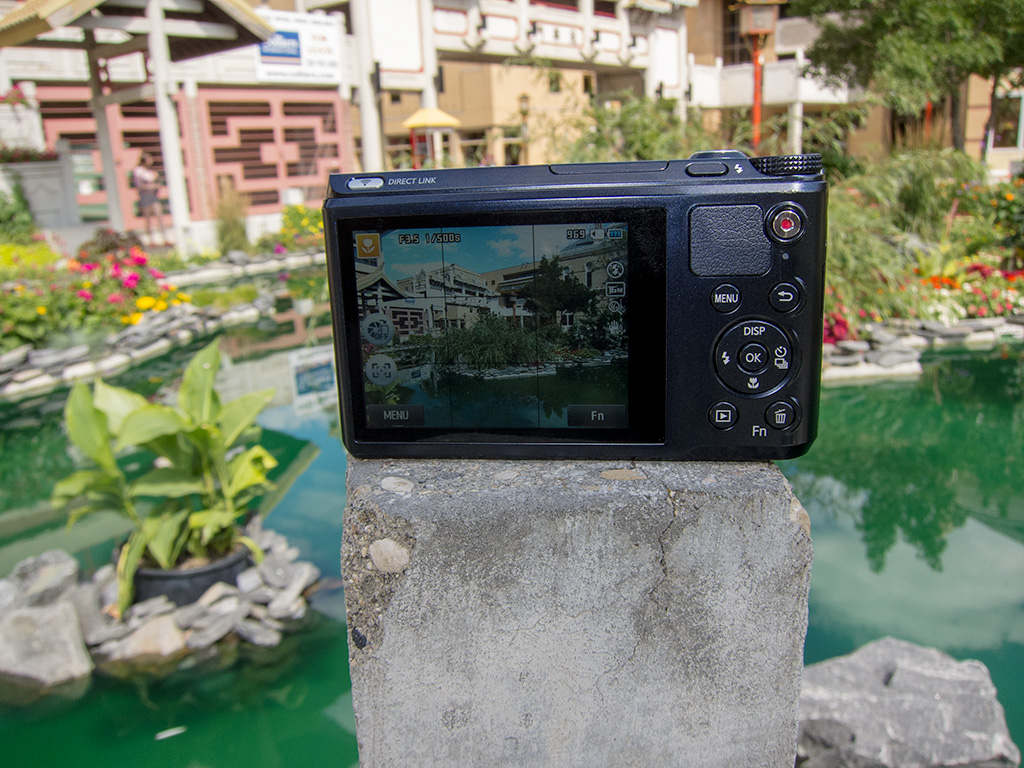A CLOSER LOOK
The top of the camera is very simple and easy to navigate; the power button is located in the middle, and the popup flash button is located right next to the mode dial wheel. The flash can be angled manually up to 45 degrees if you want to bounce light off the ceiling.
That being said the spring loaded pop-up flash feels very delicate due to being hinged by a little flimsy piece of metal. Make sure it’s down when not in use, or it may get damaged while putting the camera away in a pocket or bag.
The Mode dial works well but could have been more condensed. Regardless, options include Auto mode which exposes images without any input; Program mode which auto exposes everything and leaves you to take more advantage of other settings (such as focus, etc.); ASM for choosing between aperture/shutter; priority and manual mode for full control over the WB800F; and Smart mode which applies filters and presets to the image – for example beauty portrait keeps details like hair sharp, but softens and blurs the skin, and rich tones creates an HDR style image in camera.
The WB800F has some nice dim light modes like Low-light Shot. Using a tripod you can expose an image without any knowledge of taking long shutter photos. Another mode the Wb800F features is Best Face – something that could have been placed in Smart mode. It’s a cool gimmick that works quite well. In quick succession, five photos are taken; if you blink in one of those photos or pull a strange face, the user can select the face they like the most. It can save a bad photo, or can turn a fantastic photo into a joke:
Magic Mode Plus is another that could have been added into the Smart mode. Since these are all filters effects, some are actually quite fun to play around with, including Classic which is a fantastic B&W filter that gives brilliant tones while keep details sharp.
For functionality, of course Settings mode changes sounds, display, brightness, date time etc. Wireless mode is the most impressive, and is certainly the feature Samsung has implemented wonderfully. The ability to connect all of your devices with the Samsung WB800F Smart Camera allows media to be shared seamlessly, and allows it to be controlled with mobile devices. Playing-back photos on tablets or Smart TVs works like a breeze, especially in the Samsung ecosystem. Even a novice user should be able to figure out settings with just a quick lesson.
Next up is the screen, which we want to say is saved by the implemented touch screen capability. Samsung is still known for its displays and phones, but this touch screen just doesn’t cut it. The screen is not horrible by any means, and is responsive enough with a nice 3” TFT LCD (C-Type Touch) 460K dot resolution; however it is nowhere near as vibrant as the Samsung EX2F AMOLED screen we previously reviewed, nor does it hold up to the WB800F’s cousin, the Samsung Galaxy Camera that uses a 4.8” HD SuperClear LCD. The Samsung WB800F screen fails because of lack of brightness mostly, and hence glare. Since it’s a touch screen, the WB800F is very susceptible to smudges, which is not a huge deterrent or a deal breaker, but simply put it just does not hold up to Samsung’s high standards.
The layout of the WB800F’s back is almost identical to the Samsung EX2F: at the top right sits a dedicated Record button for capturing videos up to 1080i at 30fps. Below sits the Menu and Return buttons. Next we have a selection wheel on which the Display button toggles between shooting information, the Flash button lets you control the intensity and timing of the flash, and the Timer/Bracketing button lets you take multiple exposures to create your own HDR images. On the bottom we have the focus menu from which you can choose between Touch focus, Tracking AF, Manual focus, Normal AF and Macro. The last two buttons are the media playback buttons.
The Function menu lets you touch and slide settings, or use the forward and backwards buttons to make your selection for deleting or editing. In Manual you can select aperture, shutter, ISO, metering etc. Other modes also have different functions, but keep in mind the touch screen is not very sensitive, so changing settings is best executed by using the zoom scroll rotation for quick selections.
The side of the device is where the mini USB and micro HDMI ports rest. The mini USB port is also the charge port. Plug in the Samsung WB800F Smart Camera to any outlet or use a USB port to charge. That wins this camera big points, just like with the EX2F, as you can charge while on the go using a PowerBag or other portable charging devices.
 Technology X Tomorrow's Technology Today!
Technology X Tomorrow's Technology Today! 



